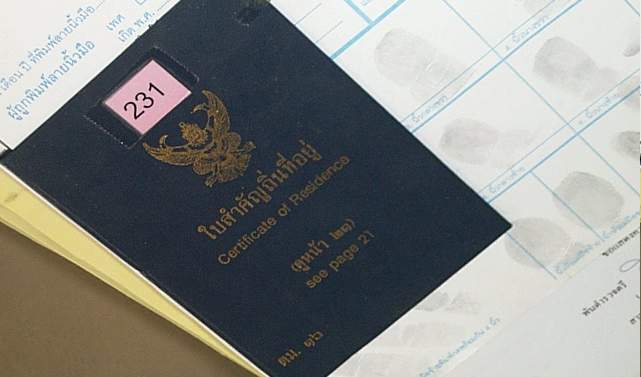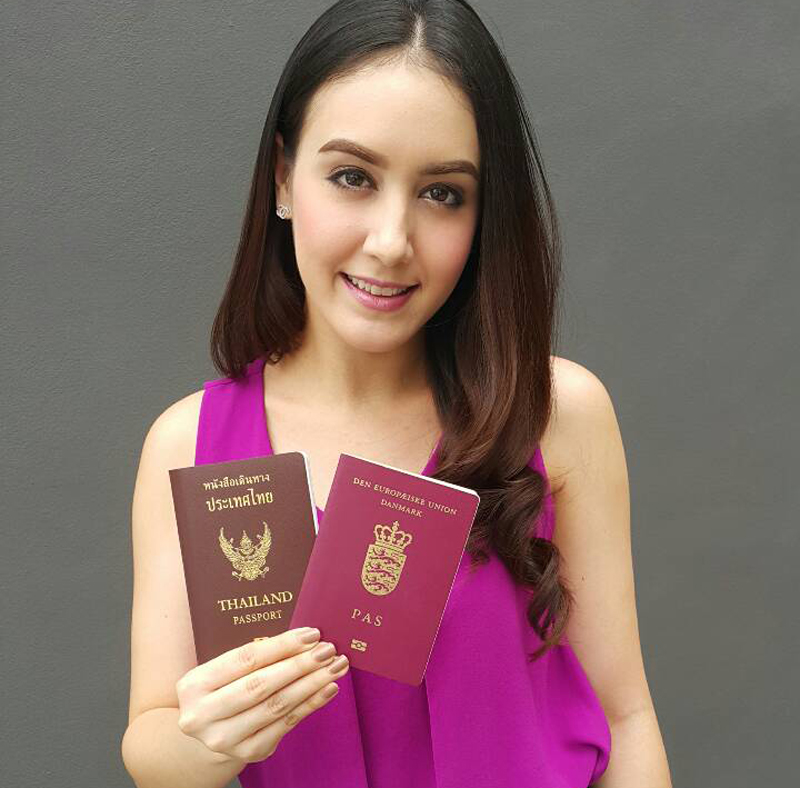One of the great things about living in Thailand is that it is a great country for road trips. From the cool mountains in the north to the beaches of the south, the roads are excellent. Thailand is really a wonderful place for driving.
Having said that, being able to have the flexibility to explore Thailand’s immediate neighbors by road is also a great option to have. Thailand has a number of international agreements with Singapore, Malaysia and Laos which allow Thai cars to enter fairly easily, with minimal paperwork. These agreements allow for vehicles from each of these countries to be insured and temporarily registered on a reciprocal basis.
Thailand and Cambodia however only have a limited agreement to allow for limited crossings by commercial vehicles, a formal agreement for passenger vehicles doesn’t exist.
This doesn’t mean however it isn’t possible for Thai registered passenger cars to enter Cambodia. It is very much possible, though there are a couple of caveats to doing so.
1) Crossing points for Thai vehicles
There are 7 registered land crossing points between Thailand and Cambodia, and at least five crossings that allow that allow Thai vehicles to enter. These are Koh Kong (KH)/Hat Lek (TH); O’Smach(KH)/Chong Jom (TH); Anlong Veng (KH)/Chong Sa Ngam (TH); Paillin (KH)/Ban Pakkad (TH) and Poipet (KH)/Ban Leuk (TH).

Most people travelling to Cambodia from Thailand will probably be heading in one of two directions. Along the Gulf of Thailand to the south, to destinations such as Koh Kong, Sihanoukville, Kampot and then onwards to Phnom Penh are one popular route.
The other (and most popular route) is travelling to Siem Reap and the World Heritage listed Angkor Wat. At less than 400km from downtown Bangkok, the most logical route to Siem Reap would be via the Cambodian border crossing (and casino mecca) of Poipet.
For decades however Poipet was notrious for being difficult, with Cambodian officials not letting individual Thai passenger vehicles enter there. Why this was the case was a mystery, but there were some interesting web-theories out there involving certain airlines lobbying the Cambodian government not to allow Thai cars to enter at Poipet as killing the short but lucrative air route.
But, as of 2023 it is possible to bring Thai cars into Poipet, and for those who are interested in using this route, the process is very much the same as below. For those who know anything about driving Thai cars to Cambodia, this is BIG and welcome news, and I successfully took my car to Siem Reap via Poipet in December 2023.
2) Limited insurance option
This point is okay for some, but a trip killer for others, so just be warned.
When you take a car into Malaysia, Laos or Singapore, there will be local insurance providers who will be able to provide you with (at minimum) a third party comprehensive insurance policy so you know that if you have an accident, any damage you might cause is covered.
Cambodian companies don’t offer this to Thai vehicles, and though it was talked about many years (and there is even a fancy ASEAN website (https://www.aseancob.org/) about this issue), the fact remains no Thai or Cambodian insurers will cover your personal vehicle while you are there. Trust me, I’ve tried!
Your own Thai insurance company MAY however coverage for your vehicle outside of Thailand as an optional extra. My insurer did (Tokio Marine) for about 1500 baht for first class coverage for four full days – so it’s worth asking your insurer if they will as an add on.
3) You will need to own your vehicle
The key document to get your car over the border is the blue car ownership book. The customs officials at the border will ask for it to process your temporary export forms. Without these, you won’t be able to take the car out of the country.
To be in possession of the blue book, you’ll need to own your car outright. This means – no loans or caveats on your vehicle – and the car can’t be under finance. You need to be the actual owner, or have permission from the owner to take the car across the border via a completed power of attorney form (แบบฟอร์มใบมอบอำนาจ กรณีมอบให้บุคคลอื่นดำเนินการแทน).
Taking your car across the border
Taking account of the issues above, below I’ll outline what documents you need to prepare so you can you’re your Thai registered card into Cambodia.
The documents you need before you start the trip are below. I highly recommend that for every document making AT LEAST 10 copies, as they will be needed by both Thai and Cambodian sides. Not having these copies simply delays proceedings as you need to go get copies made.
- Your blue car ownership book
- Your passport
- Your Thai drivers license
- Thai ID card if you are a Thai citizen.
Thai side
I’ve taken my car into Cambodia via O’Smach on the north across from Surin province as well as via Poipet as it had the best to access Siem Reap and Angkor Wat. Crossing from Trat province in the south is great if you want to access Sihanoukville. I’ve taken my Thai vehicle across the border four times 2015, 2017 and 2022 (O’Smach) and 2023 (Poipet) when I went to run in the Angkor Wat half marathon.
In addition to the documents above you’ll also need to have:
When you arrive at the border, first give these all to the immigration booth. You’ll then be stamped out of Thailand, and be given ‘Simplified Customs Declaration Form’. You take this to the Thai customs desk (usually nearby) where they will process the form, and they’ll return it to you. You will need to keep this safe and hand it back to customs when you return to Thailand.
Cambodian side
Having used the O’Smach crossing many times before Covid, a few things have changed since the border reopened. It used to be that once you had your Thai exit documents in order, the Cambodian side didn’t care and just let you drive straight in once you stamped your passport.
Cambodia now issues you with temporary import/export documents for your vehicle and you need to nominate what border you’ll exit by. You can do all of this online before you arrive via the General Department of Customs and Excise of Cambodia website, which should be easy to access and register for. Via the website, you’ll need to upload your personal and vehicle information, provide scans of your drivers license, passport, Thai ID (if applicable) as well as input vehicle information (engine and chassis numbers etc). You can also start an ‘application’ to temporarily import your vehicle.
In 2022, O’Smach started charging 100 baht per day for each day your vehicle enters which has never been done before and it is reported that Koh Kong down on the Gulf of Thailand does the same. However in December 2023 I wasn’t charged anything when crossing in via Poipet.
How they keep track of this exactly, I don’t know but you can probably get away with paying a few hundred baht and then staying much longer. The Cambodian side will also ask to keep your blue ownership book. This makes sense if you are returning via the same border post, but if you aren’t, let them know and they will take a copy. This works for O’Smach at least, but I can’t vouch for other border posts.
Returning to Thailand
Coming back, I’ve always returned via Poipet as this was the easiest and closest border crossing to Bangkok. It’s fairly straight forward to give your paperwork back at the customs office, get stamped out. Crossing back into Thailand, the registered driver of the car can get stamped back in via the main booth for cars, while all other passengers have to go via the normal immigration queues – and at peak times queues can be long!
All in all its a fun trip. We’ve made a video of the process of entering Cambodia from Thailand. I hope you enjoy it!








Hi TC,
Brilliant content, thank you! You’ve presented everything in nicely sequenced video w/visuals (save the angry guy stage :), and instructions. Well done!
I’ve lived in TH 13+ years but never attempted a border crossing in my own car. Have close friends traveling SE Asia in May and will be in Siem Reap for a few so my wife and I will go spend 3-4 days with them. Travel logistics contemplated (we live near Tambon Phe, Rayong), we started exploring the idea of driving over. Since going through your (great) content, asking ourselves if it’s worth the effort.
Question; is there an option whereby we simply drive to the border, park the vehicle safely for a few days, then taxi to Siem Reap and back?
Cheers,
Mike
Hi Mike – glad you like the video. For me, it’s totally worth it, and maybe the 1-2 hours at the border. You’ll be there for an hour at least regardless (parking, getting across, Thai/Cambodian immigration, getting the taxi etc) so at the end of the day another 45 mins or so isn’t a show stopper for me. If I’d simply had enough photocopies and had fully done the online Cambodian registration before I left I feel it would have been faster.
The only thing I’ll say is that make sure you can get your insurance sorted. I’ve taken cars over before with no Cambodian insurance, but they were old cars. Didn’t want to do it with the car you see in the video.
Thanks for the follow up. You’ve convinced me. I’ll watch again re: the insurance item. I have AXA full cover in TH – may ask them if they have a coverage path I can purchase. Maybe, maybe not.
Subscribed and look forward to future content!
M
yes, I asked my insurer who is Tokio Marine and they said coverage was possible. Ended up being something like 1500 baht for 5 days or so which was more than enough for me.
TC, I saw a Donate blip watching yesterday then a popup today. Happy to throw a couple quid your way after you manage a modest spell check on the popup.
You’ll find a certain irony in it — it’ll make you chuckle. I did. 🙂
Best,
M
Thank you and thank you? haha. I’ll take a look at the pop up. Not something I’ve looked at in detail, so thank you for the heads up!
fixed!
fixed!
Your information is somewhat incorrect and/or outdated. Firstly, I entered Cambodia with my Thai car at Ban Pakkard without issue whatsoever and this was earlier in the month.
It was free and the easiest border to enter, at least on the Cambodian side! On the Thai side, you need a form from the military, obtainable from a post about 30km before reaching the border. If you don’t know about that before coming to the border, they’ll make you go all the way back there to get it. Not a big issue but definitely a waste of time as it ends up being a 62km round trip! It’s also going to delay your entry into Cambodia by at least 90 mins.
On the Cambodian side, you go to customs and park in front of it. You then go inside and give the officers your driver’s license, car export papers, blue book etc for them to make copies. They then login to the online customs system and print out a form.
Once you have the form, you’re done!
Theoretically the system should now allow entry via Poipet but whether this is allowed in practice, is still a big “if”.
At O’Smach, I last crossed late last year (2022) and received no documents, despite asking for them, I was met with blank stares. Exiting via Chong Sa-ngam, I was given the run around for 45 minutes but finally allowed to exit. I didn’t pay anything.
Back in 2019 I was given a customs form at O’Smach (different to the one they give you now), it was handwritten and I simply handed it back on my exit at Psar Prum-Ban Pakkard. Prior to that in 2018, also at O’Smach, I was charged 100 Baht for entry (NOT 100 Baht per day) and that was it. No forms provided and i exited at Poipet Aranyaprathet.
The 100 Baht per day entry fee was always charged at Koh Kong. That’s where I exited on this most recent trip. Everything went well; just a slight delay as the customs officer took my photo and some photos of the car.
Using the official customs website route, you shouldn’t be charged anything regardless of the border you enter.
Hi Paul,
Thanks for sharing your experiences. I’m tempted next time to use the Ban Pakkard just as a different way to get to Siem Riep given the driving times (ex Bangkok) are similar going via there or O’Smach.
As for the relevance of the info, this was my experience early December 2022 for Chong Chom/O’Smach but it doesn’t surprise me at all if things change or remain different between different entry points. I do wonder about the 100 baht per day ‘fee’. I suspect its really unofficial but there wasn’t any way to avoid it. I’d previously entered though there in 2015 and 2017 and there were no fees on the Cambodian side nor any offical paperwork needed to be done for the car. At the same time, I recall the entry post down across from Trat was asking for 100 baht per day, needing to leave your blue book with them and giving you temporary cambodian plates to display.
Part of the adventure I guess!
Anyway, thanks for responding. Going to put more international driving experiences up in the next few months.
Cheers
TC